Recovering from knee surgery might seem overwhelming, but with targeted exercises and dedication, you can return to peak performance. Explore the advanced bodyweight exercises specifically tailored to aid your recovery journey after ACL surgery. Whether you’re aiming to get back to the gym, hit the field, or excel in sports, these exercises will help you rebuild strength, regain confidence, and become the strongest version of yourself.
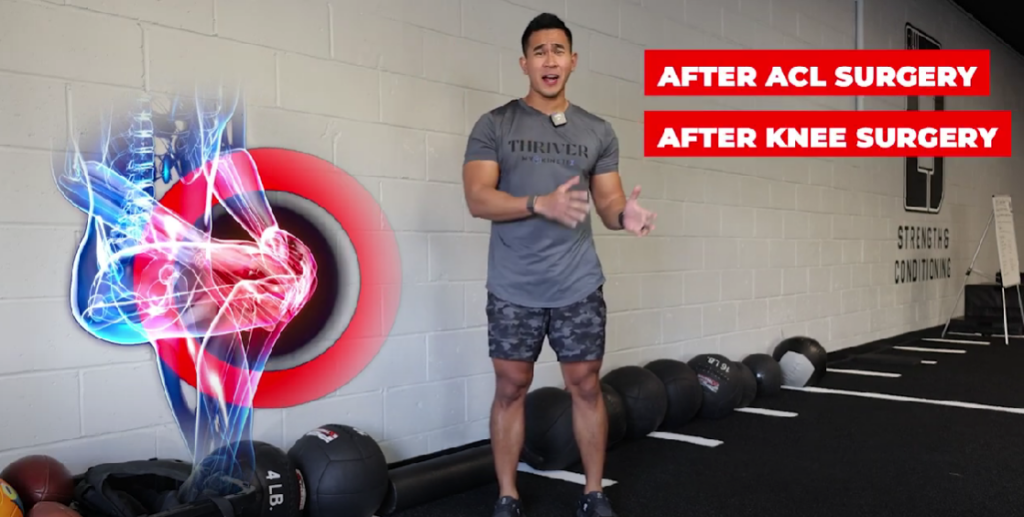
Overview of Advanced Bodyweight Exercises Post-ACL Surgery
Transitioning from basic bodyweight exercises to advanced ones is key in post-ACL surgery recovery. These exercises target higher strength and functionality levels, crucial for athletes and active individuals looking to perform at their best after surgery.
Doing these advanced exercises helps you get stronger and more flexible. They lay the groundwork for a successful return to sports and other physical activities after surgery. Here are five important exercises you should include in your routine:
Exercise #1: Hack Squat and Single-Leg Squat
Using just a wall and a foam roller, this exercise strengthens your lower body and mimics athletic movements, vital for post-ACL surgery recovery. It prioritizes knee safety and stability, aligning with the demands of sports. It’s a crucial step in regaining athleticism while safeguarding your knee’s recovery and strength.
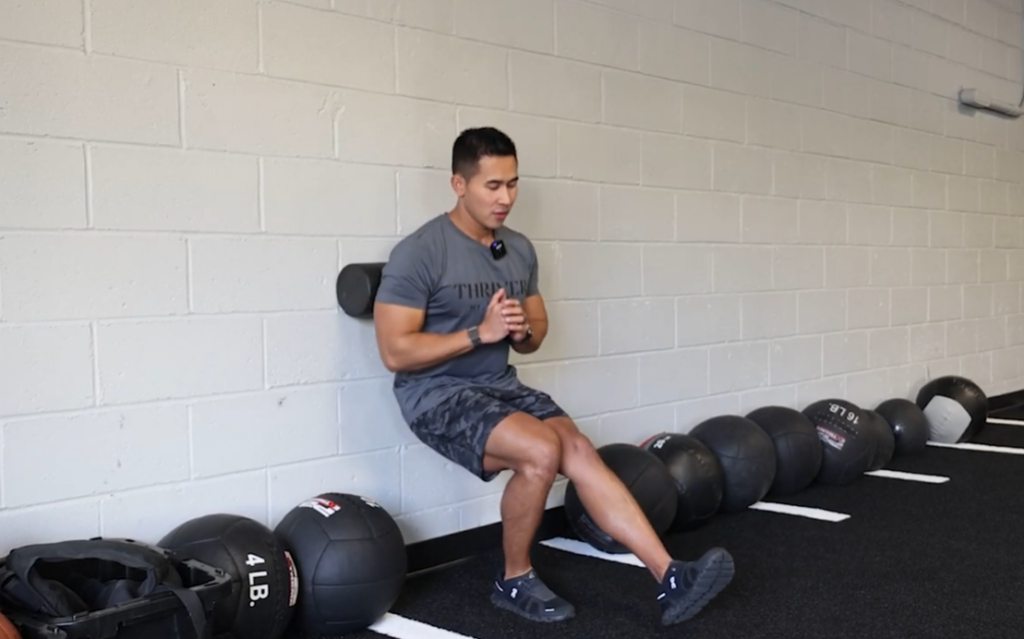
- Setup: Find a wall and position a foam roller against it. Stand a bit away from the wall, not directly under the foam roller. Your feet should be slightly in front of you.
- Movement: Lift one leg off the ground and extend it in front of you while keeping the other foot planted. Engage your quad muscles. Slowly lower yourself down into a squatting position while ensuring your knee tracks over your toes. Focus on maintaining stability and control throughout the movement.
- Execution: As you descend, aim to prevent your knee from collapsing inward or shifting outward. Keep it aligned over your toes. Push through the planted foot to return to the starting position, emphasizing the contraction of your quad and glute muscles. Repeat this motion for 10 to 15 repetitions for each leg, aiming for four sets.
Tips:
- Maintain a slow and controlled movement, emphasizing the eccentric (lowering) phase to fully engage the muscles.
- Concentrate on squeezing your quad and glute muscles as you rise back up from the squat.
- If needed, reduce the range of motion if you experience any discomfort or pain in the knee. Focus on a pain-free range and gradually work on increasing it over time.
- Remember, it’s essential to prioritize proper form over reaching extreme ranges of motion, especially if it compromises your technique or causes discomfort.
Exercise #2 Advanced Side Plank Exercise
This exercise is a powerful side plank upgrade essential for building strength after ACL surgery. It’s not just about your core; it’s about mastering hip control, crucial for stable knees during sideways moves. Mastering this exercise will boost core strength in every direction, a must for athletes aiming to recover strong.
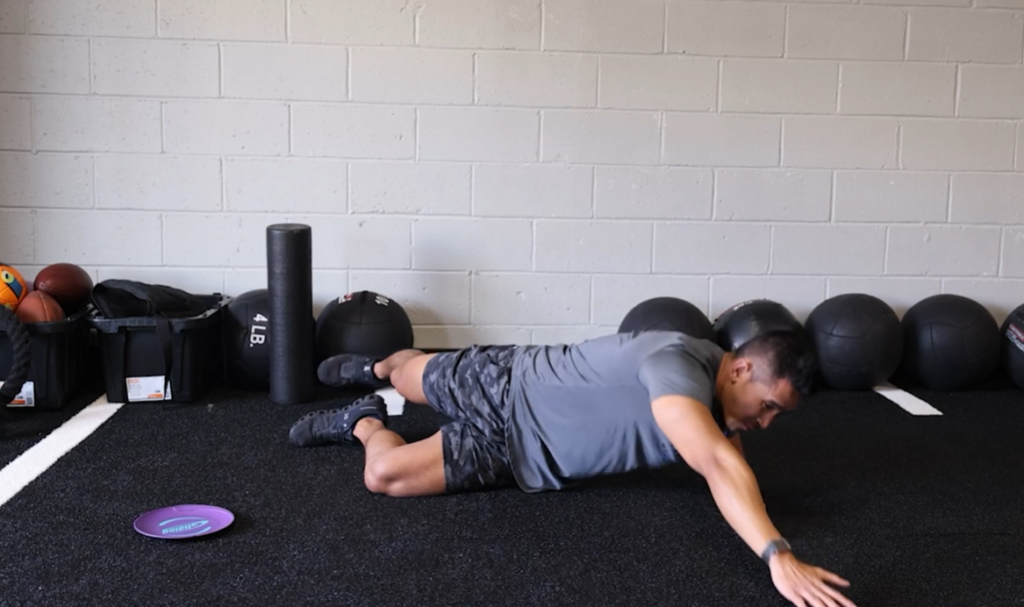
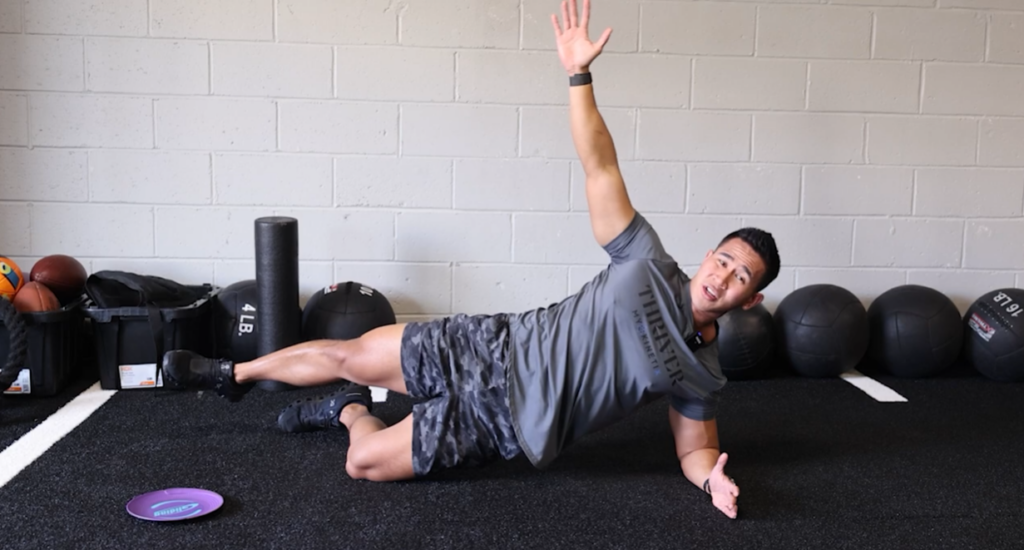
- Setup: Begin in a standard side plank position, ensuring your hips are pushed forward and away from the ground to engage your obliques. Your body should form a straight line from head to heels.
- Execution: Once stable, progress by straightening the top leg, intensifying engagement in your hips. Then, slowly reach the top arm forward while maintaining control and stability through your core. Return to the initial position with deliberate control, feeling the deep activation in your core and hip muscles.
- Repetition: Aim for 8 to 12 repetitions on each side, emphasizing a deliberate and controlled movement pattern. Focus on maintaining the stacked position of your shoulders and forearms throughout the exercise.
Tips:
- Prioritize hip control and stability, ensuring your movements originate from the core.
- This exercise targets multiple planes of motion, providing comprehensive core engagement.
- Switch sides and maintain proper form to equally work both sides of your body.
- Expect to feel intense engagement throughout your core and hips, signifying effective activation and control.
Exercise #3 Advanced Hamstring Exercise: Slider Technique
Strengthening your hamstrings is crucial for knee stability, especially post-ACL surgery. This exercise, using just a slider or a towel on a hardwood floor, targets these muscles, your body’s brakes during movements. By focusing on the hamstrings, you enhance your ability to slow down, crucial in injury prevention. Let’s break it down:
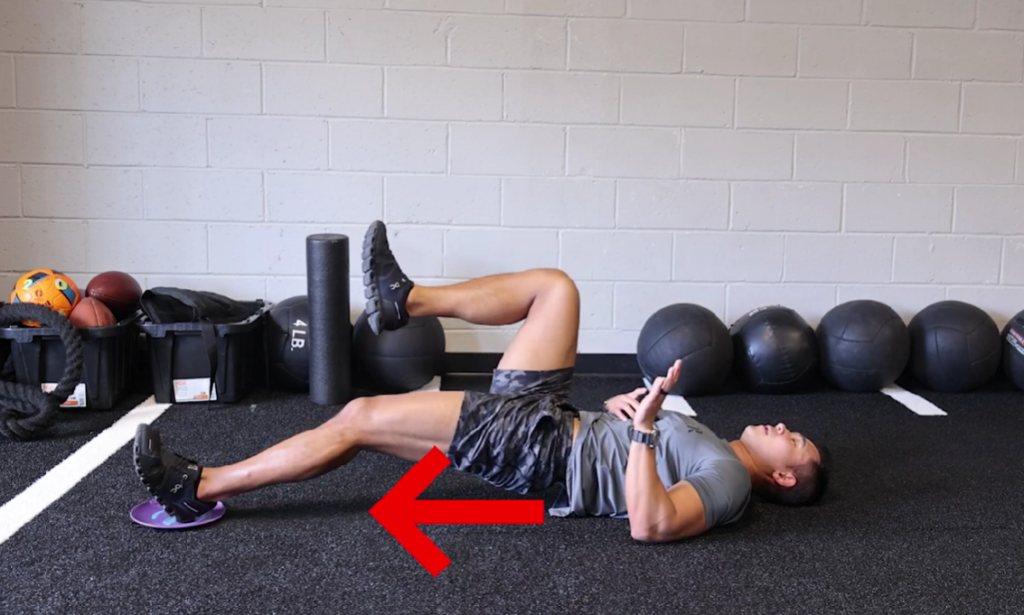
- Setup: Begin in a single-leg bridge position, emphasizing hip extension while keeping your core engaged and your back neutral. Place a slider under one foot.
- Movement: Slide the foot with the slider away from your body, maintaining control and aiming for a slow count of around 5 seconds. Ensure your hips remain raised and your back stays neutral throughout the movement. Then, return the foot back toward your body slowly, emphasizing the engagement of your hamstring muscles.
- Repetition: Perform this exercise for around 8 reps per leg, focusing on control rather than speed. For an added challenge, consider performing an outward pull with the slider before returning it inward, ensuring your lower back remains grounded and maintaining the controlled movement.
Tips:
- Maintain a focus on your hamstring engagement throughout the exercise.
- If you’ve had hamstring strains before surgery, this exercise is particularly important for rehabilitating and strengthening those muscles.
- For an extra challenge, try the outward pull variation, but prioritize proper form over excessive difficulty.
- Perform around 4 sets of 8 reps per leg, allowing your hamstrings to work effectively without excessive fatigue.
This advanced hamstring exercise is a game-changer, training your brain to control and lengthen your hamstring muscles, a vital component in your post-ACL surgery recovery journey.
Exercise #4 Advanced Gaiter Squat Technique
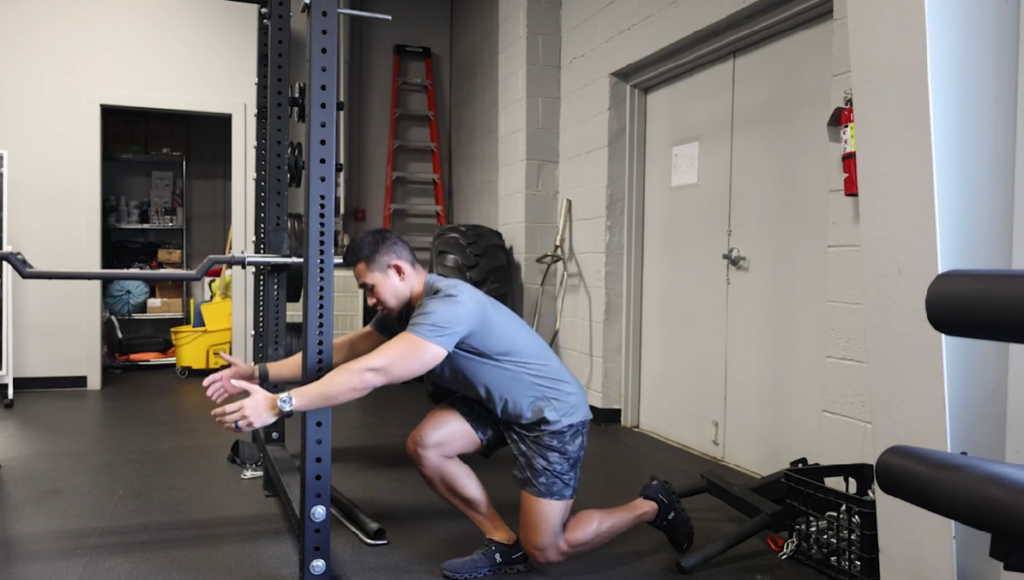
The Gaiter Squat is about loading your leg in an athletic position, preparing your entire lower body for movement. You’ll only need something to hold onto, like a kitchen counter, for balance. Here’s a simple breakdown:
- Setup: Find a support to hold onto for balance. Stand upright and slowly hinge back, dropping your chest forward and allowing your knees to slightly move over your toes.
- Movement: Focus on loading your entire lower body. Push into the ground as you drive up, mimicking how you jump and land, engaging in what’s called triple flexion and extension to produce force.
- Repetition: Aim for 8 to 15 controlled reps for four sets. For an added challenge, try performing the exercise without holding onto anything or hold a weight to counterbalance, focusing on loading your hips effectively.
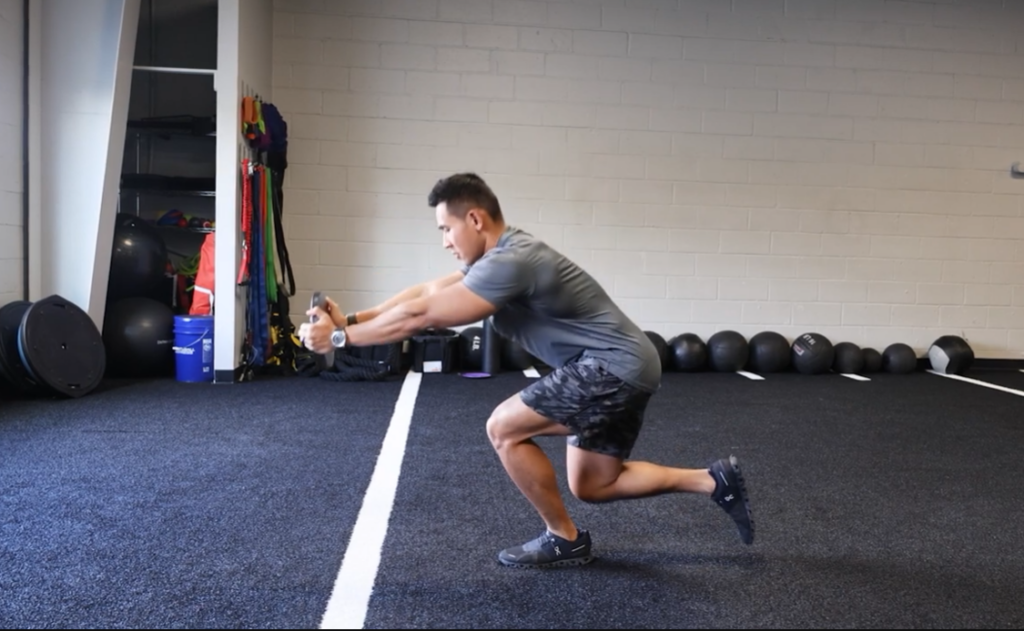
Tips:
- Visualize putting weight into your back pocket as you descend, focusing on loading your hips for the upward drive.
- Gradually increase the challenge by slowing down or adding weight to intensify the exercise.
- This exercise supports ACL rehab and knee injury recovery, paving the way for a successful return to competition.
The Gaiter Squat technique is designed to strengthen your lower body and guide you toward a confident return to competitive play by mimicking essential movements for athletic performance.
Exercise #5 Single Leg Bridge for Core Stability
The single-leg bridge is a key exercise focusing on core stabilization through hip engagement. It’s like a balancing act where you aim to keep a glass of water steady on your stomach. Here’s a simple breakdown:
- Setup: Begin lying on your back, raise one leg, and drive your hips upward while visualizing balancing a glass of water on your stomach without spilling it.
- Movement: Lift your hips while maintaining stability, avoiding any sideways tilt that might spill the imaginary glass. The focus is on engaging your glutes more than your hamstring.
- Repetition: Aim for higher reps, about 12 to 15, for four sets. Focus on feeling the effort in your glutes. If you sense more strain in your hamstring, slightly bend your knee and emphasize pushing through your heels.
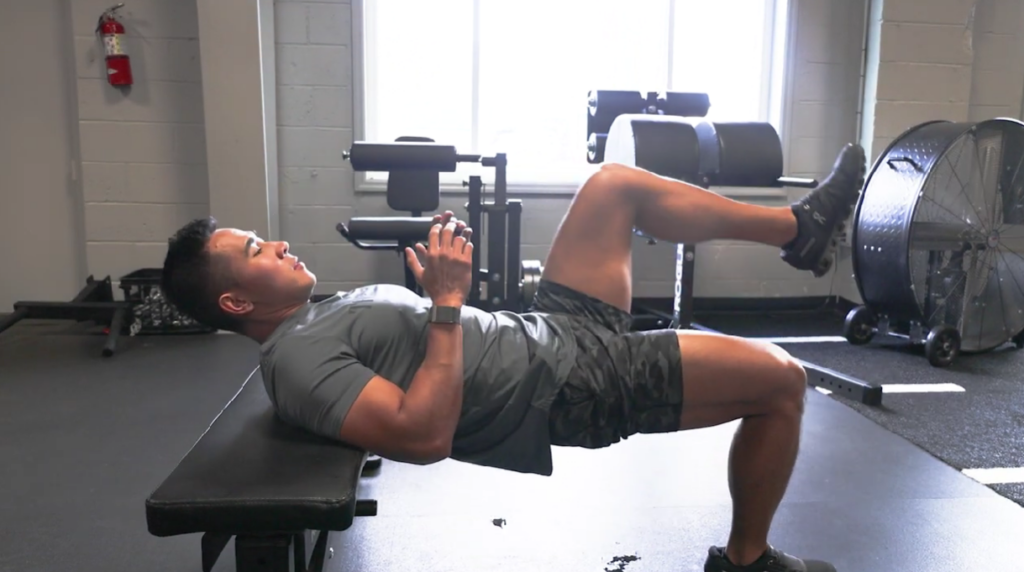
Tips:
- Concentrate on the sensation in your glutes rather than your lower back or hamstrings.
- Maintain a controlled movement throughout the exercise, ensuring balance and stability.
- This exercise contributes to core stability and can be incorporated into a circuit workout routine for added benefit.
The Single Leg Bridge enhances core stability and targets the glutes, vital for maintaining balance and stability during various physical activities.
Check out this video with Dr Natty to effectively perform the exercises laid out in this blog: https://www.youtube.com/watch?v=18orTIjGWVw
Circuit Workout Suggestions
For an efficient and effective workout routine, consider pairing specific exercises together in a circuit format. For instance, combine the knee-over-toes hack squat with the side plank exercise, followed by the skater squat with slider technique, and finally, incorporate the single-leg bridge. This strategically designed circuit not only provides a comprehensive full-body workout but also optimizes your time, taking less than 20 minutes to complete. Perfect for those constrained by time or unable to attend physical therapy sessions, this circuit routine can be easily performed at home, offering substantial benefits in strengthening various muscle groups and aiding in post-injury or post-surgery rehabilitation.
At Myokinetix, we understand that a setback like an ACL injury or lower body surgery isn’t just about recovering; it’s about emerging stronger than ever. Our team of healthcare experts specializes in guiding individuals, from everyday enthusiasts to professional athletes, through a journey of resilient recovery.
Why Choose Myokinetix?
We’re not just about recovery; we’re about transformation. We believe in enabling individuals not just to bounce back but to bounce back stronger. Our holistic approach doesn’t just heal your injury; it rebuilds your strength, confidence, and resilience, preparing you to excel beyond previous limits.
Myokinetix is your partner in turning setbacks into comebacks. Our expert healthcare providers craft personalized recovery plans, whether you’re an athlete aiming for the field or just seeking everyday mobility. With cutting-edge tech, we elevate rehabilitation for precision and efficiency, optimizing your healing journey.
Are you ready to reclaim your strength, surpass your previous best, and thrive post-injury? Contact us today and embark on a tailored recovery journey designed to elevate you to new heights of strength and performance. Book a call with our team to discuss getting started today!
Rise stronger with Myokinetix!
.
